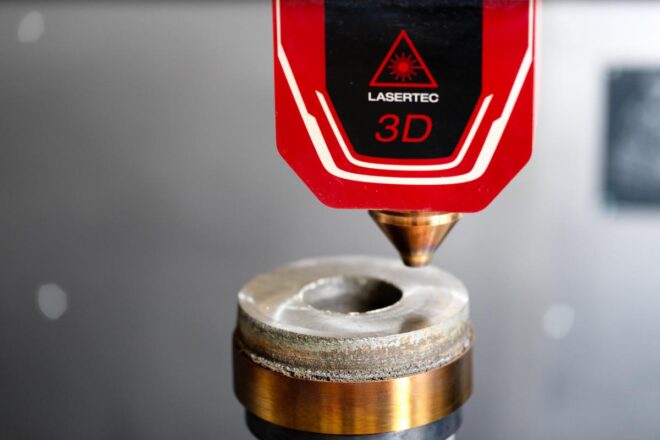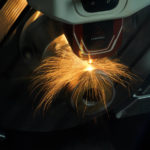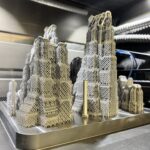Matteo Perini, the technologist of the Polo Meccatronica laboratory, is a major expert in Direct Energy Deposition – DED 3D printing.
An interview in DEVELOP3D Magazine honours the rapid prototyping laboratory’s expertise and the skills of its technologists.
The article brings together the interviews of other leading experts in the field of additive manufacturing, along with engineer Matteo Perini:
- Robert Bowerman, technical consultant at Autodesk and former AM research engineer at the Manufacturing Technology Center.
- Mathieu Pérennou, director Strategy & Global Business Development Additive Manufacturing, at Hexagons’ Manufacturing Intelligence division
- Filomeno Martina, CEO and co-founder of WAAM3D
- Terry Turner, business development manager at DMG Mori in the U.K.
>> Read the article “DED 3D printing comes of age”, by Stephen Holmes.
What is DED 3D printing?
DED – Direct Energy Deposition 3D printing is a 3D printing process that was usually used to repair or add material to existing, large-sized components, a sort of automated and accelerated welding. In recent years, the DED 3D printing process has evolved greatly and has been re-evaluated by AM technologists who believe it can be considered a veritable additive manufacturing process that can offer excellent results in its use.
What applications benefit from DED 3D printing?
The main areas of application for DED 3D printing are: the manufacturing industry, the aerospace industry, the marine sector, and wherever there is a need to produce components composed of multiple different materials and characterised by complex structures. The main feature of DED technology is that it is able to create large-volume components of the desired shape in a limited time due to the high deposition rate, from 3D model directly to final production!
What is ProM Facility’s experience with DED 3D printing?
Hybrid (additive-subtractive) manufacturing represents the synergy between traditional chip removal manufacturing and additive manufacturing. Among the leading companies working with DED technologies is DMG Mori, which combines LDW – Laser Deposition Welding – technology with a 5-axis milling machine.
ProM Facility is equipped with the innovative LASERTEC 65 3D Hybrid, which is capable of processing either by adding molten metal powder by laser or by removing material by 5-axis CNC machining. The materials used in ProM Facility for DED 3D printing are many and include different types of steel, nickel alloys and copper alloys. The machine is used for a variety of operations, from building a component to coating surfaces, as well as for repairing damaged objects.
What are the future prospects for DED 3D printing?
“In the near future, DED 3D printing technology will be used in various sectors of industry but also in areas such as architecture and art, allowing designers to construct metal shapes and masterpieces that were simply unimaginable just a few years ago,” explains Matteo Perini, the ProM Facility engineer specialising in additive manufacturing, interviewed by Stephen Holmes for DEVELOP3D Magazine




